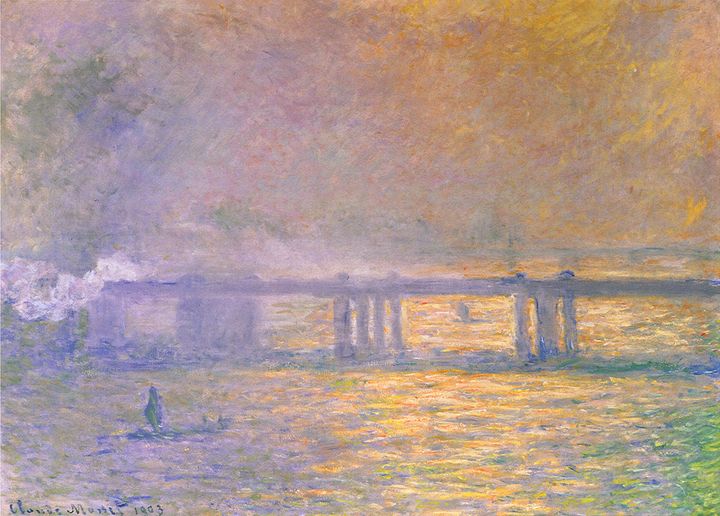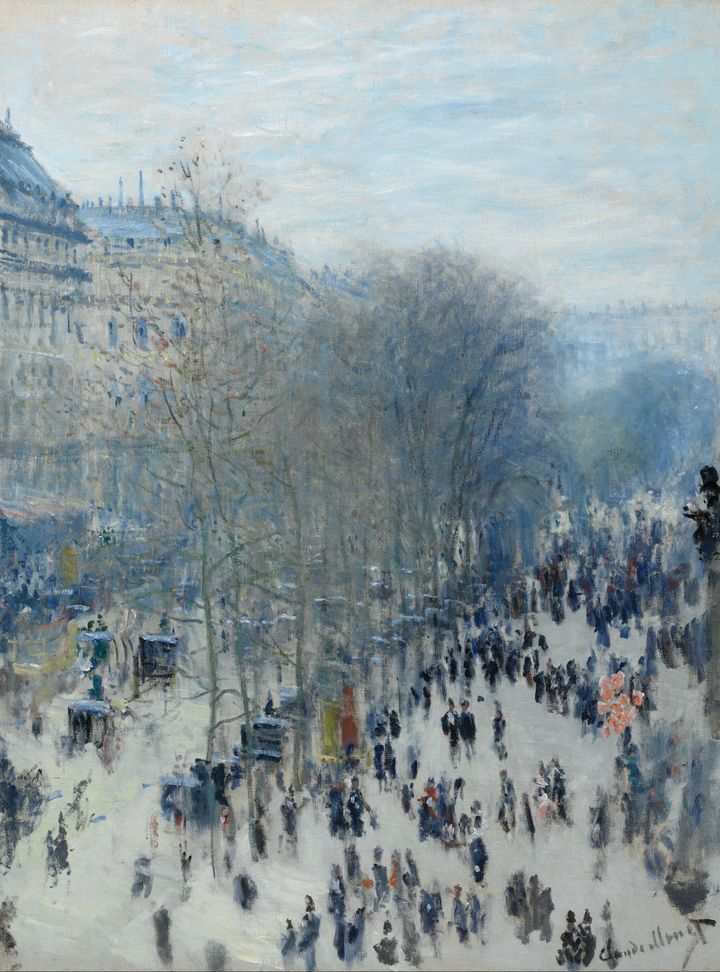
Claude Monet and some of his contemporaries may just have been influenced by air pollution more than we’d previously realised.
Yep, the 19th Century impressionist painter, born in 1840 and known for work like the famous Water Lilies, seemed to reflect the changing atmosphere in major cities like London and Paris through his changing artwork.
Looking at some of the artist’s work in London’s Tate Britain museum, climate physicist Anna Lea Albright realised there may be a strong link between weather and Monet’s style.
She then noticed the same thing in Joseph Mallord William Turner’s (born in 1775) signature way of covering his scenes with fog and smoke. Albright couldn’t help drawing a comparison to her own work following air pollution, even though Turner’s work predated the impressionist era.
Paintings completed decades apart show that Turner’s work starts to turn that bit hazier as time goes on, with a lack of clarity surrounding the shapes.
Turner painted just as the British industrial revolution was starting to take off, and when London became known as the “Big Smoke” – so maybe the fuzziness was less an artistic choice, and more of a reflection of what he was really looking at.
According to Science News, Albright said: “I started wondering if there was a connection.”
Although she did clarify that she was not saying, “oh we can explain all of impressionism”, her research did find a common thread.
She and Harvard University climatologist Peter Huybers analysed nearly 130 paintings by Turner, Monet and some of their contemporaries to look at how they had reflected life in these evolving cities between the late 1700s and the early 1900s.

They noticed that this distorting effect – low contrast and whiter tones, associated with both impressionism and air pollution, when pollutants scatter the light – tends to decrease as the 19th Century moves on.
As they revealed in the Proceedings of the National Academy of Science, Albright and Huybers found the declining use of this effect actually coincided with the decrease in air pollution, based on estimates from historical records of coal sales.
The researchers said: “Our results indicate that [19th century] paintings capture changes in the optical environment associated with increasingly polluted atmospheres during the industrial revolution.”
They also noticed that the hazy effects were at their height at a different time period between Monet’s Paris paintings and Turner’s London ones.
They suggested this is because the French industrial revolution started later than the English one – Paris’s air pollution started to accumulate in around 1870, whereas London’s built up in the early 1800s.
The pair looked at the visibility available in the paintings too. It seems Turner’s work pre-1830 had around 25 kilometres of visibility – this fell to around 10 kilometres after 1830.
By around 1900, Monet’s work in London showed less than five kilometres – an amount comparable to the smog seen in Delhi and Beijing nowadays.
Even when they looked at other London or Paris-based impressionists, they came to similar conclusions – air pollution explained around 61% of contrast difference between the paintings.
